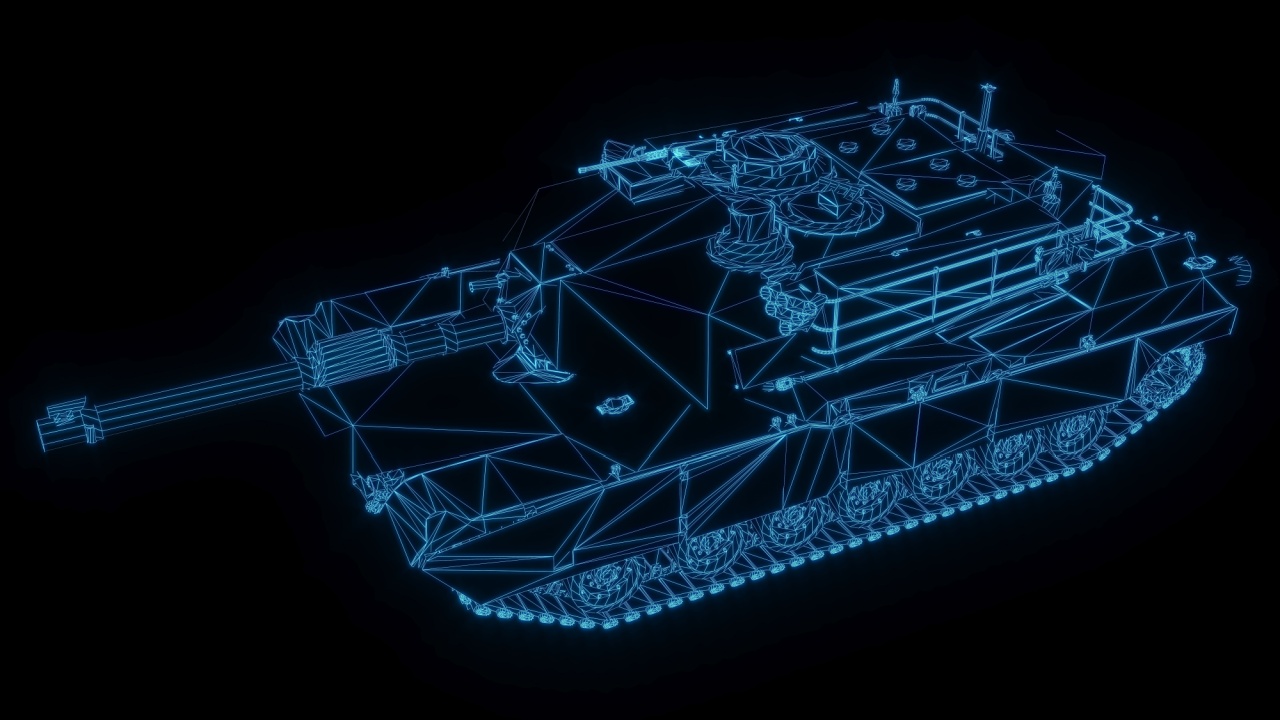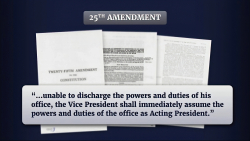
Chrysler’s TV-8 Tank was More Science Fiction Than Reality
What could possibly go wrong for a tank powered by and outfitted with its own nuclear reactor? Chrysler sought to find out.
File this one under “More Crazy 1950s Cold War Tech.” The Chrysler TV-8 tank represents one of the most audacious (and ridiculous) designs in the history of armored vehicle development.
Conceived during the 1950s, a period marked by rapid technological innovation and Cold War paranoia, the TV-8 was a radical attempt to redefine the tank itself. Designed as a nuclear-powered, amphibious, and highly versatile medium tank, the TV-8 looked like it was from a future that mixed The Jetsons with Mad Max.
With the Cold War in full swing, the United States Army sought next-generation armored vehicles. Nuclear war loomed large over the minds of the men who ran the Pentagon. Few in leadership roles in the military truly believed that the United States was going to get away with a nuclear war breaking out with the Soviet Union at some point.
As a result of this mentality, military planners sought vehicles capable of operating in post-nuclear warfare environments—areas replete with not only hostile forces, but contaminated by radiation, chemical agents, and biological weapons.
Additionally, the US Army was interested in tanks that could adapt to a variety of terrains, including rivers and coastal areas, and provide support for amphibious operations. Against this apocalyptic backdrop, Chrysler, a major American automaker with a long history of defense-related contracts, proposed the TV-8 as part of the Army’s ASTRON program.
The “Floating” Tank
A medium tank, weighing approximately 25 tons, with a crew of four, the TV-8’s most striking feature was its pod-like design, featuring a fully enclosed turret that housed the crew, weapons, and powerplant—all mounted on a lightweight chassis. This turret was capable of floating and propelling itself through water.
TV-8’s design, unlike conventional tanks of the era, was composed of a single, integrated unit for its upper structure. The turret was egg-shaped, with a rounded, armored shell designed to reflect enemy projectiles and withstand the pressures of amphibious combat operations.
The turret would have been equipped with a 90mm T208 smoothbore gun, along with secondary armaments, including two .30-caliber machine guns and a remotely operated .50-caliber machine gun mounted on top. The turret was mounted on a tracked chassis, but the tracks were relatively lightweight, as the tank’s amphibious capabilities reduced the need for heavy armor on the lower hull.
TV-8’s turret was sealed to prevent flooding during amphibious operations. With this design, the TV-8 could float, with the tracks providing limited propulsion on land and the jet pumps taking over in aquatic environments.
American war planners were obsessed with amphibious operations because it was assumed that major combat with the Soviet Red Army would occur in Europe, where rivers define the geography. Another area of engagement against the communist bloc would have been in Asia, which also hosts numerous strategic waterways.
Because the Chrysler engineers envisaged the TV-8 being used in a nuclear war, they enclosed the turret with an airtight seal to better protect the crew from being contaminated by any nuclear, biological, and chemical (NBC) threats. A closed-circuit television system allowed the crew to observe their surroundings without exposing themselves to external hazards. Hence, the “TV” designation that Chrysler gave to their absurd tank.
Most intriguingly, Chrysler proposed powering the tank with a full-on nuclear fission reactor. Chrysler envisioned a vapor-cycle nuclear reactor to power the vehicle, which would generate electricity to drive electric motors, propelling the tank both on land and in water.
This system promised several advantages: a nuclear reactor could theoretically provide near-infinite range, eliminating the need for frequent refueling, and it would allow the tank to operate in contaminated environments without relying on external air for combustion engines.
In water, meanwhile, the TV-8 would employ jet pumps powered by the same electric motors, enabling it to navigate rivers, lakes, or coastal waters with ease.
The TV-8’s Downsides
Despite its innovative design, TV-8 faced significant complications during its development that ultimately led to its cancellation. The most significant problem was its own mini nuclear power plant. While nuclear energy has always held promise, the technology was very much in its infancy in the 1950s. A nuclear reactor small enough to fit inside even a 25-ton tank posed insuperable engineering challenges, including safety, shielding, and maintenance issues.
If the reactor failed or sustained battle damage, the result could be utterly catastrophic, with potentially devastating radiation leaks that would endanger both the crew and nearby forces.
That’s to say nothing of the serious logistical woes that would arise from maintaining and refueling nuclear-powered vehicles in the field.
Then there was the buoyant turret, which, although unique and cutting-edge, actually compromised armor thickness, making the tank less resistant to conventional anti-tank attacks. The reliance on electric motors, while forward-thinking, raised concerns about reliability and power output compared to traditional diesel or gasoline engines.
Cheaper, More Effective Tanks Were Available
What’s more, the tank’s 90mm gun, while adequate for its time, was not significantly superior to existing tanks like the M48 Patton. This raised questions about whether the TV-8’s complexity justified its battlefield role.
Most important was the cost. The TV-8’s advanced technology, particularly its nuclear reactor and amphibious systems, would have made it a massively expensive system, with no guarantee that these tanks would operate as advertised, as evidenced above. The Pentagon ultimately determined that the TV-8 was far too high-risk, high-cost for it to be of any strategic value.
Chrysler’s TV-8 never made it beyond the conceptual mock-up stages. By 1956, the Army concluded that the tank’s technological challenges and costs outweighed its potential benefits. The project was subsequently shelved. TV-8’s legacy is one of foreshadowing.
Its emphasis on crew protection against NBC threats, for example, anticipated the development of modern tanks with advanced filtration and sealing systems. The use of closed-circuit television systems was a precursor to the sophisticated sensors and optics found in modern tanks, too.
About the Author: Brandon J. Weichert
Brandon J. Weichert, a Senior National Security Editor at The National Interest as well as a contributor at Popular Mechanics, consults regularly with various government institutions and private organizations on geopolitical issues. Weichert’s writings have appeared in multiple publications, including The Washington Times, National Review, The American Spectator, MSN, The Asia Times, and countless others. His books include Winning Space: How America Remains a Superpower, Biohacked: China’s Race to Control Life, and The Shadow War: Iran’s Quest for Supremacy. His latest book, A Disaster of Our Own Making: How the West Lost Ukraine, is available for purchase wherever books are sold. He can be followed on Twitter @WeTheBrandon.
Image: Suvit Topaiboon / Shutterstock.com.
The post Chrysler’s TV-8 Tank was More Science Fiction Than Reality appeared first on The National Interest.


















